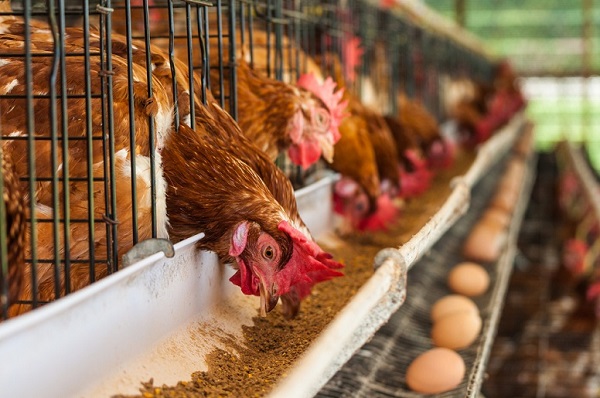The reproductive performance of layer breeders is essential for the success of commercial egg production, which relies heavily on effective feed management. Feed-borne pathogens represent a significant challenge, affecting the health and productivity of layer breeders, leading to reduced egg production and quality.
Pathogens such as Salmonella, E. coli, and Clostridium perfringens are prevalent in contaminated feed and severely impact reproductive performance. These pathogens disrupt the gut microbiome, causing enteritis that can lead to reduced flock uniformity, lower egg production, and poor feed conversion rates. For example, Salmonella has been widely studied and detected in animal-derived proteins, oilseed meals, and cereal grains. Research from 2002 to 2009 in the U.S. found a 12.5% contamination rate in feed, highlighting the risk to layer breeders.
The presence of Salmonella can result in salmonellosis, reducing egg production, deteriorating egg quality, and even damaging reproductive organs. Similarly, E. coli causes colibacillosis, leading to inflammation of the oviduct, lower egg production, and further spreading within the flock. Clostridium perfringens, which causes necrotic enteritis, compromises nutrient absorption and indirectly impacts reproductive performance due to the resulting health decline. In addition to bacterial threats, mycotoxin-producing fungi, such as Aspergillus species, pose significant risks to layer breeders. Mycotoxins, such as aflatoxins, can accumulate in poorly stored feed ingredients, leading to liver damage, decreased egg production, and poor eggshell quality.
Feed-borne pathogens not only affect reproductive performance but also influence long-term flock productivity and egg quality. Contaminated feed disrupts both the immune and digestive systems, leading to nutrient malabsorption and inflammation. This deterioration in bird health delays sexual maturity and reduces egg yield. The continuous immune response to these pathogens also diverts energy and nutrients that would otherwise support growth and reproductive development, leading to suboptimal egg production and compromised flock uniformity.
When pathogens infiltrate during the rearing phase, they trigger the pullets’ immune systems, reducing their ability to develop properly. This weakens the flock, delays egg production, and produces variable growth among birds, which creates challenges in managing uniform egg production.
Feed-borne pathogens can also negatively affect genetic performance by hindering growth rates, feed conversion ratios, and reproductive outcomes. Pathogens like Salmonella can translocate from the digestive tract to reproductive organs, reducing fertility and damaging reproductive tissues. This interference distorts the assessment of genetic potential, making it difficult for breeders to select the best-performing stock. The stress on gut health caused by these pathogens affects overall vitality and reproductive efficiency. This skewing of performance data hampers genetic progress, as the birds fail to meet their expected growth potential, not due to genetics, but due to the detrimental effects of feed-borne pathogens.
Addressing feed-borne pathogens is critical for preserving the health and productivity of layer breeders. Robust prevention and control measures include consistent feed quality monitoring, strict hygiene protocols, and the use of feed additives to promote gut health and strengthen immunity. One example of a targeted solution is Anitox’s Multi-Point Intervention Programs (M-PIPs), which scientifically focus on the highest-risk areas of the feed production process. Instead of treating the entire volume of feed, M-PIPs concentrate on pre-treating high-risk raw materials, eliminating bacteria present in feed mills, and protecting finished feeds from recontamination. This targeted approach ensures cleaner feed production, reduces microbial loads, and supports sustainability by minimizing chemical use while maximizing pathogen control.
By adopting such multi-point strategies, producers can reduce the risks associated with feed-borne pathogens, protect egg production, and enhance the long-term productivity of layer breeder flocks.



